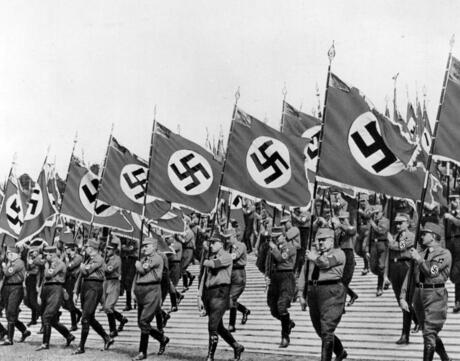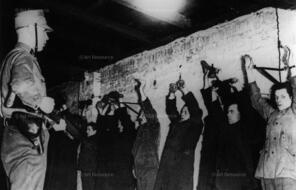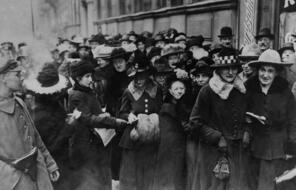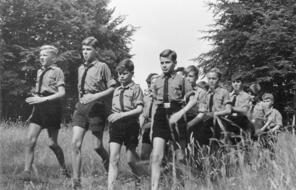
Examining Hitler's First Radio Address
At a Glance
Language
English — USSubject
- Social Studies
Grade
6–12Duration
Two 50-min class periods- The Holocaust
Overview
About This Lesson
This lesson complements the resources from Chapter 5 of Holocaust and Human Behavior to help students investigate the carefully crafted ideas and messages that Adolf Hitler included in his public statements in the first days of his tenure as German chancellor. By completing a close reading of Hitler’s first radio address after becoming chancellor, students will analyze the ways that he sought to portray the history that led up to his appointment as head of the German government as well as his vision for the future of the country under his leadership. By comparing Hitler’s speech to what they have learned about Hitler’s ideology and the Nazi Party’s platform in Chapter 4, students will analyze the choices Hitler made about what parts of the Nazi program to emphasize in his speech and what ideas to omit, and they will consider what those choices suggest about the Nazis’ sensitivity to public opinion and power to manipulate it.
Preparing to Teach
Lesson Plans
Activities
Materials and Downloads
Unlimited Access to Learning. More Added Every Month.
Facing History & Ourselves is designed for educators who want to help students explore identity, think critically, grow emotionally, act ethically, and participate in civic life. It’s hard work, so we’ve developed some go-to professional learning opportunities to help you along the way.
Exploring ELA Text Selection with Julia Torres
On-Demand

Working for Justice, Equity and Civic Agency in Our Schools: A Conversation with Clint Smith
On-Demand

Centering Student Voices to Build Community and Agency
On-Demand














